Introduction
The words “hazard” and “risk” seem simple, but these words are easily confused. 14 CFR part 5, section 5.5 defines these two terms as follows:
- Hazard – a condition that could foreseeably cause or contribute to an aircraft accident as defined in 49 CFR part 830, section 830.2.
- Risk – the composite of predicted severity and likelihood of the potential effect of a hazard.
Simply put, a hazard is a condition that could cause an accident. The probability and predicted severity of the consequences that may result from any hazard is the risk. Identifying, analyzing, and responding appropriately to hazards decreases the risks and increases the margin of safety.
Hazard Exposure
The example of a person crossing a street helps explain the relationship between hazard and risk. The traffic is always a hazard, but it does not usually create a significant risk for a pedestrian until the actual street crossing takes place.
Some people may lack the experience needed to understand the hazards and risks associated with crossing a busy street and need to learn the procedures used to cross streets safely. In a similar way, pilots need to identify aviation hazards and associated risks and learn to deal with them appropriately. However, when assuming pilot-in-command duties, pilots encounter a variety of hazards, and they may not recognize the potential for an accident in a given situation. Pilots need the ability to perceive relevant hazards, understand and analyze potential consequences, and exercise judgment when responding to any hazard.
Why Hazards Result in Aviation Accidents
Pilots learn to recognize hazards during ground and flight training. While instructors normally include the learner in the decision- making process, training does not teach the learner how to manage every hazard. A saying goes that new pilots have a cup of luck and an empty cup of experience, and they should fill the cup of experience before their cup of luck runs out. However, all pilots should understand that any situation involving a hazard may present a significant risk to their safety. Rather than relying on luck, the correct response to a given hazard often depends on many variables and calls for a disciplined analysis and response. The following case studies illustrate this point.
A pilot with approximately 233 hours of total time rented an unfamiliar airplane for a round-trip VFR cross-country flight. The pilot had about 2.6 hours of time in the specific make and model. The NTSB narrative indicates the following:
According to the operator of the airplane, the pilot had difficulty starting the engine prior to departing for Erie International/Tom Ridge Field (KERI), and requested assistance. The operator proceeded out to the airplane, and showed the pilot how to start the engine. The operator then suggested the pilot leave Erie with enough time to return to Waterbury-Oxford Airport (KOXC) before sunset. Later in the day, the pilot called the operator and informed him that the airplane operated fine on the flight to Erie, and he would be back at Waterbury-Oxford by 19:00.
The pilot actually departed Erie at night. There was a fatal crash and the NTSB probable cause states:
The loss of partial engine power for undetermined reasons, and the pilot’s loss of control after performing an evasive maneuver to avoid trees during a forced landing at night. Factors related to the accident were a rough running engine and the pilots inability to see the trees due to the nighttime conditions. The NTSB accident details are available here.
While not common, even professionally trained pilots sometimes fail to recognize and respond to hazards and associated risks. An airline accident involving a transport category turbojet taken to its maximum operating altitude resulted in both engines flaming out after an aerodynamic stall. The flight ended in a crash and two fatalities. The NTSB probable cause(s) follows:
The National Transportation Safety Board determines the probable cause(s) of this accident to be: (1) the pilots’ unprofessional behavior, deviation from standard operating procedures, and poor airmanship, which resulted in an in-flight emergency from which they were unable to recover, in part because of the pilots’ inadequate training; (2) the pilots’ failure to prepare for an emergency landing in a timely manner, including communicating with air traffic controllers immediately after the emergency about the loss of both engines and the availability of landing sites; and (3)
the pilots’ improper management of the double engine failure checklist, which allowed the engine cores to stop rotating and resulted in the core lock engine condition. Contributing to this accident were (1) the core lock engine condition, which prevented at least one engine from being restarted, and (2) the airplane flight manuals that did not communicate to pilots the importance of maintaining a minimum airspeed to keep the engine cores rotating. The NTSB accident details are available here.
Understanding the Risks Posed by Hazards
A predisposition to respond to persons, situations, or events in a given manner reveals a person’s attitude. Studies have identified five hazardous attitudes that can affect a pilot’s ability to make sound decisions and exercise authority properly. [Figure 3-1]

Figure 3-1. Pilots should examine their decisions carefully to ensure that their choices have not been influenced by a
hazardous attitude.
Most pilots sincerely believe that they will respond to hazards appropriately and take actions necessary to avoid accidents. However, a pilot’s attitude affects perception of hazards, the analysis of the potential threat, and performance of an appropriate response.
Since attitude influences behavior, pilots should consider their own attitude and the antidote to any hazardous attitude. [Figure 3-2] The pilots in the two fatal accidents described above exhibited several of these hazardous attitudes. If they had recognized their attitude toward the hazards and associated risks and considered that their behavior could result in an accident, it is very likely that they would have acted differently (invulnerability). If the general aviation pilot had waited and returned the next day, he might be alive today (impulsivity). The commercial pilots wanted to claim they had flown the aircraft at its maximum altitude (macho). Pilot attitudes regarding hazard analysis clearly play a role in decision-making.
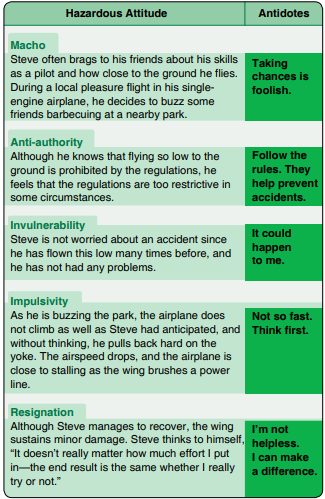
Figure 3-2. Antidotes to hazardous attitudes.
Leading Accident Causes
The aviation accident record has improved considerably in recent years, but the reduction in accident rates has not been uniform across the aviation community. For example, the accident rate for air carriers operating under 14 CFR part 121 was reduced by nearly 80 percent in the ten-year period beginning in the mid-1990s. In contrast, general aviation aircraft operating under 14 CFR part 91 maintained a static accident rate of about one fatal accident per 100,000 flight hours.
The FAA and the general aviation community collaborate through the General Aviation Joint Steering Committee (GAJSC), to suggest safety enhancements that could reduce accidents. As part of this effort, the GAJSC analyzed hundreds of general aviation accidents and evaluated the causal factors. The FAA Fact Sheet on General Aviation Safety ranks the following ten leading causes of general aviation fatal accidents during the period 2001-2016:
- Loss of control in-flight (LOC-I)
- Controlled flight into terrain (CFIT)
- System component failure–powerplant
- Fuel related
- Unknown or undetermined
- System component failure–non powerplant
- Unintended flight into IMC
- Midair collisions
- Low-altitude operations
- Other
The top four causes of general aviation fatal accidents include loss of control in-flight (LOC-I), controlled flight into terrain (CFIT), system component failure of the powerplant (SCF-PP), and fuel-related issues. These causes often signify the final result of a chain of events. However, an in-depth analysis of these accidents will often reveal inadequate risk management as a common thread. To begin with, pilots should recognize hazards linked to causes of aircraft accidents as presented below:
- Loss of Control In-flight (LOC-I)–Examples of loss of control scenarios include continued VFR into IMC, wake turbulence upsets, thunderstorm encounters, instrument failure, improper aircraft loading, loss of outside references during flight at night or over water, and conditions that exceed the pilot’s capability.
- Controlled Flight into Terrain (CFIT)–CFIT often results from continued VFR flight into areas with a low ceiling or low visibility, flight at night, incorrect interpretation of a chart, flight at high density altitude, flight in mountainous terrain, or intentionally flying too low.
- System Component Failure Powerplant (SCF-PP)–This category includes a variety of hazards, some which the pilot or operator may not easily identify. If a pilot experiences difficulty with an engine run-up or experiences an engine issue after maintenance, a significant hazard may exist.
- Fuel-Related–Pilots still experience fuel starvation or fuel exhaustion. Misunderstanding or mishandling the aircraft’s fuel system, a lack of adequate planning, trying to stretch aircraft fuel range, or an unwillingness to take the time or make the effort to stop for fuel contributes to this type of accident.
Identifying Hazards
There are several ways pilots can detect hazards. Pilots should use combinations of methods to detect hazards, including the following:
- Visual Observation–A pilot’s observations provide a primary means to identify hazards. For example, a pilot can visually observe thunderstorms and maintain a safe distance from them. A pilot who can see terrain can maneuver to avoid it.
- Preflight Planning–Many hazards can be detected through preflight planning. Weather briefings identify hazards. Aircraft performance calculations, preflight inspections, and other routine procedures may identify hazards.
- On-board Equipment–The availability of lower-cost modern avionics has improved situational awareness in many general aviation aircraft. Technologies such as GPS-based moving map navigation, datalink weather, traffic displays, terrain displays, and synthetic vision help pilots recognize different hazards.
- Radio Communication–Voice radio provides an effective means to find out about hazards. Communication with air traffic controllers and flight service specialists can provide real-time information on weather, air traffic, airspace activity, and other hazards.
- Postflight Inspections–Inspecting the aircraft following the completion of a flight may identify aircraft hazards before the next person flies the aircraft. Common items include condition of tires and brakes, security of access panels and latches, and leaking operating fluids. Properly securing the aircraft may prevent damage, which could affect the next flight.
Using the PAVE Checklist to Identify Hazards
As described in Chapter 1, the PAVE checklist provides a means to identify hazards using four convenient hazard “buckets.” Using all four checklist categories before a flight captures most hazards normally encountered. This section discusses hazards associated with each category.
Pilot Hazards
“P” hazards can be classified in terms of both capability and aeromedical factors as follows:
- Qualification–Does the pilot possess the appropriate pilot certificate, category, class, and type rating needed to operate a specific aircraft under the given set of conditions? Some accidents have occurred when pilots have attempted to operate under IFR without holding an instrument rating. A few accidents occur every year when the pilot did not possess any airman certificate.
- Currency–Has the pilot logged the minimum number of takeoffs and landings and instrument approaches, flight reviews, or other currency events required by 14 CFR? Are the currency requirements sufficient to guarantee that the pilot will be able to handle the flight requirements?
- Proficiency–Does the pilot have the ability to manage the conditions expected during flight? For example, suppose a pilot plans an IFR flight with forecast of low ceilings. Under 14 CFR part 61, the pilot needs to have logged six instrument approaches, holding, and tracking within the previous six calendar months to be IFR current. However, if
- these currency events occurred five months ago, the pilot may lack the proficiency to make the flight safely. If a pilot flies an unfamiliar aircraft, does the pilot have the ability to use the avionics and systems efficiently and properly?
Aeromedical
Aeromedical hazards relate to physical and emotional readiness for flight including:
- Illness–Does a pilot suffer from initial symptoms, ongoing illness, or any aftereffects? Even mild symptoms may be sufficiently debilitating to create a “P” hazard.
- Medication–Could any medications the pilot takes affect the flight? Both prescription and non-prescription over-the- counter (OTC) drugs have side effects that can affect a pilot’s physical and mental performance. The FAA provides information regarding OTC drugs here.
- Stress–Has a stressful life situation affected the pilot? Many personal or business events and activities can cause stress. Stress has many manifestations and affects thinking, behavior, and health.
- Alcohol–Has the pilot consumed alcohol recently? The CFRs include a time limit (no consumption within eight hours before a flight), a quantity limit (blood alcohol must be below 0.04 percent), and a performance limit (flight duty prohibited while under the influence of alcohol). Aftereffects of alcohol consumption (dehydration, hangover, and headaches, etc.) may trigger a “P” hazard for longer than eight hours after consumption.
- Fatigue–How alert is the pilot? Fatigue may result from insufficient sleep. However, sufficient sleep only corrects acute fatigue. Chronic fatigue may involve multiple factors and requires additional analysis and remedy. Fatigue can be intensified by hypoxia as well as emotional state. While fatigued pilots have fallen asleep while flying, the effects of fatigue may be subtle. For example, fatigue may degrade cognitive skills and decision-making ability.
- Emotion–Has the pilot experienced an event or received information that creates strong feelings? Emotions may affect normal pilot ability to focus.
The IMSAFE checklist, which is an acronym for Illness, Medication, Stress, Alcohol, Fatigue, and Emotion, can help a pilot identify these hazards. [Figure 3- 3] Note that some publications combine Emotion with Stress as the “S” in IMSAFE and leave the “E” to remind pilots about “Eating.” Since proper nutrition and hydration affects wellness and safety, a pilot planning a long flight should consider appropriate food and water intake and supply.
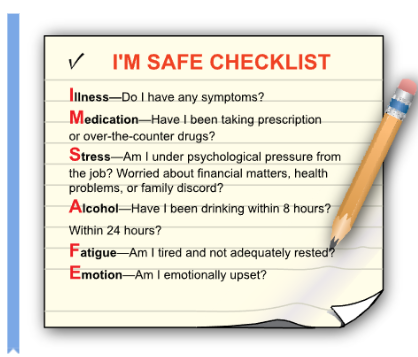
Figure 3-3. IMSAFE checklist.
Aircraft Hazards
“A” hazards can be classified in terms of both performance and equipage.
Performance
Aircraft performance hazards may include:
- Fuel and Range–As previously described, fuel issues continue to be a leading cause of general aviation accidents. Planning a flight to the aircraft’s maximum range magnifies this “A” hazard. Inaccurate calculations, changing conditions, or the aircraft’s failure to achieve “book” speeds and fuel consumption can lead to an incident or accident.
- Takeoff and Landing Performance– Takeoffs and landings become more hazardous when the calculated performance approaches the available runway length.
- Altitude Performance–Operating to or from high altitude airports or cruising at high altitudes may result in a lack of performance. In some cases, this lack of performance may not allow for a safe departure. In situations where a climb could avoid a weather or terrain hazard, the lack of performance might contribute to an incident or accident.
- Payload–Does an aircraft have the capability to carry the passengers, baggage, cargo, and fuel for a planned flight? In addition, operating near maximum takeoff weight reduces climb performance.
- Weight and Balance–Pilots who do not check center of gravity limits may experience difficulty trimming or controlling the aircraft, which could lead to a loss of control in-flight.
Equipage
The avionics and other equipment installed in an aircraft affect both utility and the ease with which a pilot can identify hazards. Equipment considerations include:
- Redundancy–Could equipment failure affect the type of flight contemplated? For example, on a day VFR flight in Class E airspace, having only a single navigation/communication radio is not a major concern. However, for a flight in IMC, having one radio could be considered an “A” hazard. Instrument failure is also a concern in IMC or at night, and backup systems could prevent an accident.
- Autopilot–Operating an aircraft in IMC without an autopilot increases pilot workload. A pilot flying an aircraft in these conditions might consider aircraft without an autopilot an “A” hazard.
- Inoperative Equipment–Inoperative equipment triggers an “A” hazard. For example, an inoperative landing light may make night operation more hazardous, even though a landing light is not required for Part 91 operations when not for hire. A pilot should consider the effect of inoperative equipment in relation to expected flight conditions.
Environmental Hazards
The environment or “V” hazard encompasses weather, terrain, airports, airspace, time of day, and other factors.
Weather
Of all the environmental hazards, weather is the most variable. However, improvements in aviation weather forecasts and improvements in technology make it easier to identify weather hazards.
- Thunderstorms and Convective Activity–Thunderstorms and their associated weather represent a severe hazard to all aviation activities. Severe turbulence, hail, and other phenomena can create the potential for loss of control and may result in structural failure of the aircraft.
- Icing–Icing conditions constitute a hazard, and in-flight ice accretion has resulted in numerous loss of control accidents. Frost, ice, or snow adhering to the aircraft on the ground, if not removed, can also be a hazard.
- Low Ceilings and Visibility–At times, conditions below minimums can extend beyond the range of an IFR flight. Continued VFR flight into IMC continues to cause accidents.
- Turbulence and Winds–Severe turbulence aloft, although not common, can result in loss of control and may lead to aircraft structural failure. Surface winds also constitute a hazard. For example, a crosswind that exceeds an aircraft’s demonstrated maximum crosswind component or the pilot’s ability may result in loss of control on the ground (LOC-G).
Terrain
Terrain and surface features are a significant hazard to all aircraft. In extreme cold or high pressure, height above ground and obstacles may be less than indicated. Pilots following instrument approach procedures have also been involved in CFIT accidents.
- Mountains, Hills, and Elevated Terrain–Mountainous terrain affects departure, en route, and arrival operations. Numerous airports in the western United States require the use of special procedures.
- Density Altitude–The combination of high temperature and high elevation affects aircraft performance. High density altitude is a “V” hazard that affects takeoffs, climbs, and landings.
- Over-water Operation–Takeoff at night over a large body of water can create a “black hole” effect and require the pilot to immediately shift to control by instruments. Operating over water may not provide a suitable surface for an emergency landing.
Facilities
The departure and arrival facilities pilots use contain various hazards, and these can be aggravated by other environmental factors.
- Airports–Runway dimensions may not be sufficient such that a takeoff or landing can be performed safely under the given conditions.
- Runway Contamination–Wet or snow-covered runways are an environmental hazard. Some airplane flight manuals (AFM) provide little or no guidance on how to modify takeoff and landing distances for contaminated runways.
- Heliports–The aircraft rotor diameter may exceed the space available.
- Seaplane Bases–Conditions that allow for landing may not be sufficient for takeoff. Obstructions may exist below the water and could be affected by tides. Rough water or glassy water conditions may exist.
- Approach Aids and Lighting–A facility without working approach aids and lighting for a given set of operating conditions is a “V” hazard.
Airspace, Air Traffic Control, and Other Aircraft
Airspace requirements and ATC services facilitate safe and efficient operations. However, under some circumstances, their presence or absence constitutes a “V” hazard.
- Prohibited and Restricted Airspace–Different airspace designations and restrictions are meant to protect pilots and aircraft from hazards. For example, entering a prohibited or restricted area without permission can result in conflicts with military aircraft.
- ATC Delays and Service Availability–The ATC system may require route changes or holding, which may require more fuel than expected.
- Air Traffic Density and Collision Hazards–Pilots are responsible for seeing and avoiding other aircraft when flying under VFR or in VMC while flying under IFR. However, under certain conditions, it is difficult to see other aircraft because of haze, sunlight, aircraft position, blind spots, and other factors.
Night Operations
Night operations make it more difficult to see and identify other hazards.
- VFR operations–Visual operations are often hampered by visibility restrictions at night. This restricts a pilot’s ability to see and avoid terrain and obstacles, other aircraft, precipitation, and other hazards.
- Single-engine operations–A forced landing at night may require a pilot to deal with unexpected terrain hazards. In addition, the failure of engine accessories, such as an alternator, may lead to total electrical failure.
External Pressure Hazards
External pressures or “E” hazards originate from a variety of personal and business reasons. The pressure to get to a particular destination or to leave at the conclusion of a planned stay can affect a pilot’s judgment. Pilots subject to external pressures sometimes fail to consider the other three major categories of hazards.
- Why does the pilot need to fly to a particular destination at a given time? Wanting to be present at a family celebration, wishing to see a terminally ill relative, or the need to be at an important meeting can affect pilot motivation. It may be a simple matter of not wanting to disappoint someone waiting at the destination. It could also include a condition that arises during a flight, such as a sick passenger.
- If a general aviation aircraft is used for business travel, a pilot may experience time pressure after committing to be somewhere at a given time. Business flights place additional pressure on the pilot to conduct the “mission,” regardless of the hazards and conditions.
Hazard Combinations
Pilots often need to consider the effect of interactions with several hazards at the same time. Imagine that a pilot operates from the Elkins-Randolph County airport in Elkins, West Virginia (KEKN). This airport sits in a valley at an elevation of 1,987 feet. The terrain and obstacles on the east and west sides rise to as high as 3,631 feet. The images in Figure 3-4 and Figure 3-5 show a photograph and a sectional aeronautical chart excerpt of the Elkins airport.

Figure 3-4. Elkins, WV airport.

Figure 3-5. Sectional chart excerpt of Elkins, WV airport.
The mountains and obstructions on both sides of the Elkins airport are a hazard. However, on a day with good visibility, few clouds, and light winds, the associated risks are low for most aircraft engaged in visual flight rules (VFR) operations.
If the Elkins airport scenario changes to a night operation, the level of risk associated with the combination of hazards increases, and an accident becomes more likely. Pilots exposed to these multiple hazards need to consider the equipment, skill, and experience necessary to operate safely.
Hazards and Associated Risks
While interaction with a hazard can cause an accident, the level of risk associated with the hazard depends on composite of the likelihood for the type of accident and the expected severity of injury as a result of such an accident. Depending on a particular flight mission, each individual risk may be acceptable or unacceptable. In general aviation operations, the tolerance for risk is generally low, and pilots should use risk assessment and management tools to mitigate any unacceptable risk before embarking on a flight.
Using a Flight Risk Assessment Tool (FRAT)
Identifying hazards and associating them with risks can be accomplished using a simple spreadsheet or form during flight planning. The form used to record each hazard is known as a Flight Risk Assessment Tool (FRAT).
Numerical FRATs
A numerical FRAT lists different hazards and an associated number, which indicates the significance of each hazard. The pilot selects the relevant hazards, and derives a total score. Typically, the score falls into three ranges. If the total score is below a certain minimum, the FRAT indicates low risk. If it is in an intermediate range, the pilot is advised to “exercise caution.” If the score is above an upper threshold, the FRAT indicates danger. [Figure 3-6]
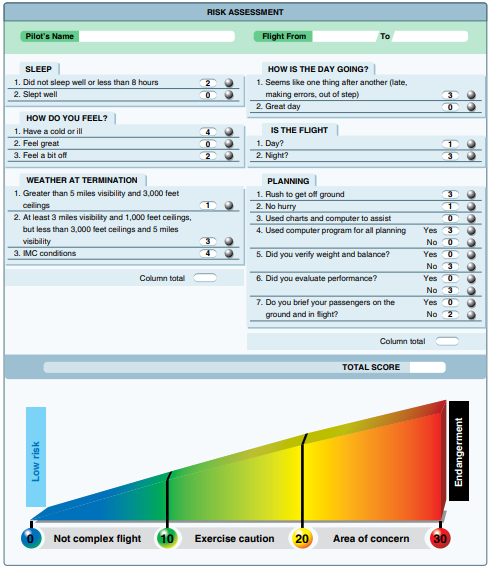
Figure 3-6. Example of a numerical FRAT.
The FAA provides a numerical FRAT here. While this type of FRAT is easy to use, it has several drawbacks, including:
- The form may not cover all the hazards for a particular flight.
- The range of scores for each risk level may appear arbitrary, leading a pilot to question the results.
- The form does not encourage the pilot to analyze each hazard. For example, what is the likelihood the condition will lead to an accident and what is the potential accident severity?
- The form may indicate an overall low level of risk, leading the pilot to ignore the implications of a particular hazard.
Narrative FRATs
This type of FRAT asks the user to identify hazards and associate each hazard with risk. While taking more time to complete, it addresses many of the disadvantages of a numerical FRAT. After identifying the hazards, the process includes a thorough analysis and management of each risk.
The following example of a narrative FRAT has the pilot determine the likelihood and severity for each hazard identified using the PAVE checklist [Figure 3-6]. After further analysis, the pilot can determine how to manage each risk. This concept will be explored further in the next chapter.
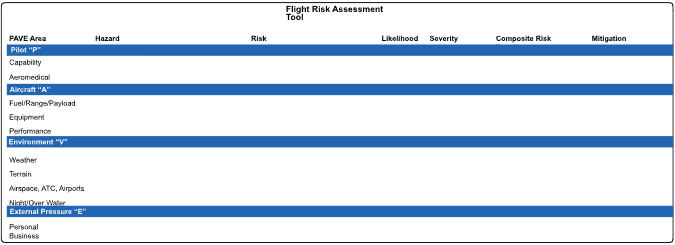
Figure 3-7. Example Flight Risk Assessment Tool.
Case Study
One way to understand the risk management process is to put it in a real-world context using a case study. The following example will be used in this chapter, as well as Chapters 4 and 5, to illustrate a process to identify hazards, assess the associated risks, and mitigate the risks as needed.
Background and Setting
It is early on Friday, July 1, and Tricia just finished a successful week of consulting for clients in Portland, Boise, Dallas, and Albuquerque. She flew to these locations from her home base in Santa Rosa, California (KSTS) using her single-engine airplane. She had planned to return directly to Santa Rosa, but yesterday evening, her friends from Santa Rosa, Matt and Martha Smith, invited her to spend the weekend in Durango, Colorado where they have a condominium. She gladly accepted their invitation because she would enjoy seeing them.
The flight from Albuquerque to Durango during the day on Friday goes smoothly. Tricia lands at the Animas Air Park (00C), rather than the Durango-La Plata County Airport (KDRO) because the Smith’s condo is less than a mile from Animas Air Park, toward town. Figure 3-8 shows a sectional chart excerpt from the Durango area.
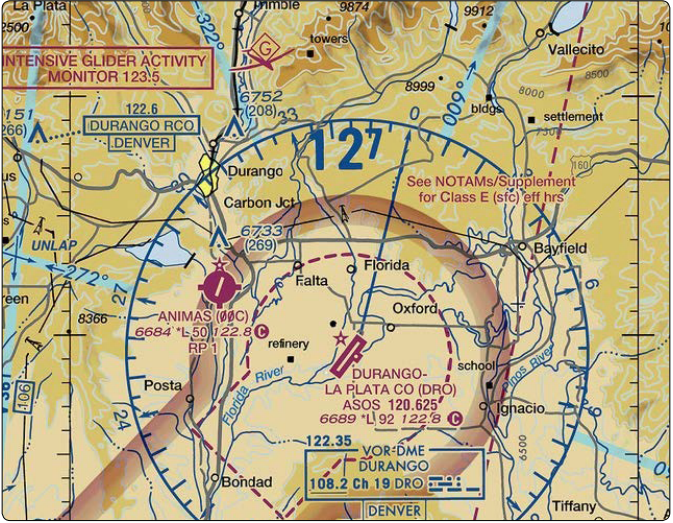
Figure 3-8. Aeronautical chart excerpt showing Durango, CO.
Tricia and the Smiths are enjoying the warm-weather weekend with rafting, cycling, and hiking as featured activities. The Smiths are well-established in the Durango social scene, and the three friends go to parties on Friday and Saturday night, with another one scheduled for Sunday night. Finally, on Monday, July 4, there will be a city-sponsored Independence Day celebration where the Smiths will officiate.
It is now late afternoon on Sunday. Tricia and the Smiths are back in their condo relaxing and discussing the weekend. Coincidentally, both Tricia and Martha Smith just received urgent emails from their separate home offices in Santa Rosa, CA, alerting them to critical meetings that are scheduled for Tuesday afternoon–Tricia’s at 4 pm and Martha’s at 3 pm. Matt tries to book airline tickets from Durango to Santa Rosa for Tuesday morning, and with a worried look, he announces that there are no airline seats available until Wednesday, at the earliest.
Martha Smith then asks Tricia, “Would you be willing to fly us home in your airplane on Tuesday morning? This would allow us all to enjoy the Monday celebration and the party Monday night before taking off early on Tuesday.” Tricia replies, “I need to review the weather and do some other planning first, and we can all meet in a couple of hours.”
Tricia goes back to her room and begins her analysis. First, she looks at the route that she might take home. Originally, she planned a direct VFR flight back to Santa Rosa, a nonstop flight of 711 nautical miles, as depicted in the sectional chart excerpt in Figure 3-9.
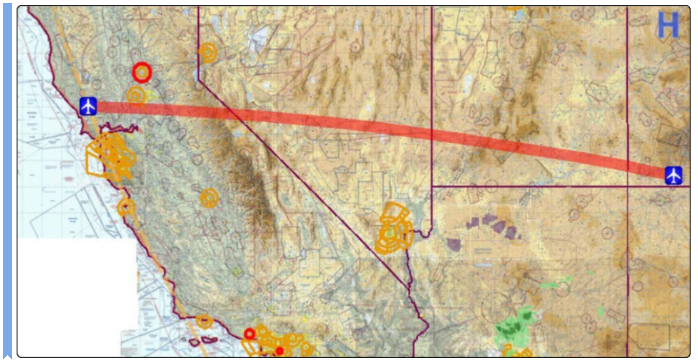
Figure 3-9. The direct route from Durango to Santa Rosa.
Tricia makes a quick analysis and figures she can fly this trip nonstop in just under five hours, with 6 hours and 45 minutes of endurance with full tanks. She then evaluates the weather and immediately foresees some challenges.
A low-pressure system with a trailing cold front is moving south into northwest Colorado. The front is triggering severe convective activity as it collides with moist air in the southwest. Low ceilings and poor visibility are widespread behind the front, with mountain obscuration and icing in clouds above 8,000 feet. The weather in Durango should remain good VFR on Monday, but change to IMC early Tuesday morning as the weather system slowly moves southeast.
Data
Tricia needs to organize, consider, and evaluate all the information.
Pilot and Passengers
The pilot and passenger data is as follows:
- Current under 14 CFR part 61 for VFR and IFR
- Last instrument time logged four months ago
- Tricia’s weight is 130 pounds, the Smiths weigh 340 pounds together
- Tricia has 40 pounds of baggage, the Smiths have 80 pounds
Aircraft
The aircraft data is as follows:
- Not certificated for flight in known icing conditions
- Empty weight: 1903 pounds, Maximum gross weight 2,740 pounds
- Luggage compartment carries 120 pounds
- Current fuel 25 gallons (150 pounds) Fuel capacity 64 gallons (384 pounds)
- Average fuel consumption at 10,000 feet: 8.6 gallons per hour
- Average true airspeed at 10,000 feet: 152 knots
- Calculated takeoff distance at 25º C, 6,700 feet pressure altitude, no wind, and 2,740 pounds: 4,700 feet over a 50- foot obstacle
- Calculated takeoff distance at 25º C, 6,700 feet pressure altitude, no wind, and 2,500 pounds: 3,600 feet over a 50- foot obstacle
Environment
The following is in addition to weather data mentioned earlier:
- Temperatures at Animas Air Park (00C): 25º C mornings, 35º C afternoons, calm winds
- California weather forecast: Good VFR except morning fog on the coast
- Arizona weather forecast: Good VFR weather on Monday, marginal VFR Tuesday
Hazard Identification and Risk Analysis
Tricia decides to begin her risk analysis by identifying the potential hazards and associated risks for the flight to Santa Rosa, using the PAVE checklist. The various hazards and risks may overlap in more than one checklist category, but she wants to identify all the hazards and risks and may consolidate them later in the process.
Pilot
- She is IFR current, but it has been four months since her last proficiency event. This hazard could increase the risk of loss of control in IMC.
- If she consumes alcohol, she needs to allow for a minimum of eight hours prior to the planned departure on Tuesday to be legal. She also needs to be free from any aftereffects from alcohol, which could be magnified by the altitude and result in dehydration. This hazard could increase errors.
- She has been going to bed late and getting up early in Durango. This fatigue hazard could increase the risk of making error.
Aircraft
- She is concerned about the range/payload trade-off for her airplane. Reducing the range by trading fuel weight for payload could increase the risk of fuel exhaustion.
- Tricia also knows that her aircraft is not approved for flight in known icing conditions and that an icing encounter could lead to loss of control.
- She is concerned about the takeoff from Animas Air Park at gross weight, considering the runway length. This potential hazard could create a risk for an overrun or stall after takeoff. Her personal minimums include a 20 percent additional margin over calculated runway takeoff distance.
Environment
- The weather system moving in from northwest Colorado is the main environmental hazard affecting the flight to Santa Rosa. The presence of both convection and icing could increase the risk of loss of control, or if attempting to stay underneath the clouds in VFR, the risk of CFIT.
- The high, rough terrain in this part of the southwest United States presents a hazard on the route to Santa Rosa. This requires relatively high cruising altitudes which may approach the performance limits of her airplane.
- The departure airport has no ATC services, although fuel is available. ATC may limit the altitude selection en route, which could limit an escape from icing conditions.
External Pressures
- The scheduled meetings back in Santa Rosa on Tuesday generate external pressures. The need to be present in Durango on Monday narrows the departure window to Tuesday morning only. If these pressures are not mitigated, a forced departure on Tuesday morning will mean dealing with the hazards and associated risks related to the pilot, the aircraft, and the environment.
As Tricia tallies up the hazards and associated risks for the planned flight to Santa Rosa, she records them on the FRAT, as shown in Figure 3-10. She needs to assess these risks in terms of their likelihood and severity. She strives to complete the risk analysis so she can return and discuss the situation with the Smiths.
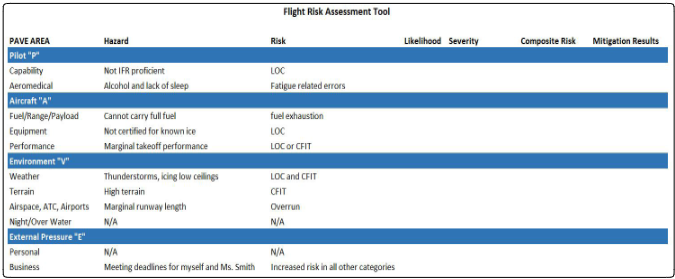
Figure 3-10. Case study FRAT with risks identified.
The risk assessment and mitigation for this case study will continue in Chapters 4 and 5.
Chapter Summary
Poor risk management is a common factor in many general aviation accidents. Pilots can use the PAVE checklist before flight to identify hazards. Pilots can use a FRAT to organize identified hazards and associated risks for additional analysis.





